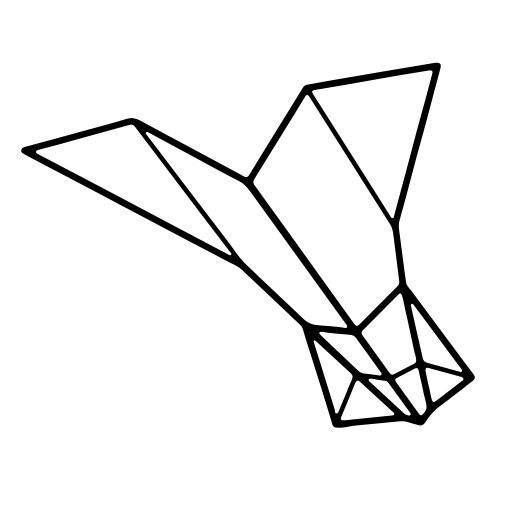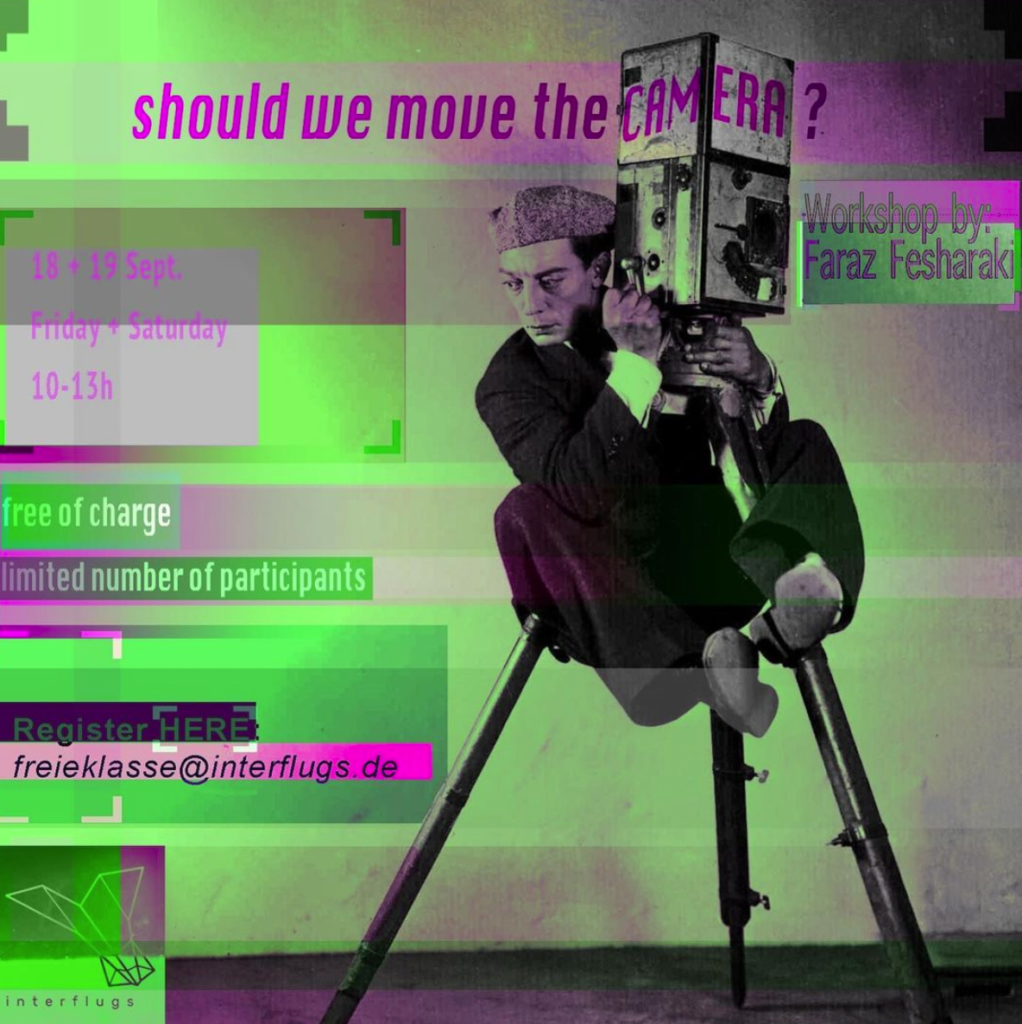Date: 18/09/2020
18 Sept, 10-13h (Online)
19 Sept , 10-13h (Outside)
*limited number of participants*
register: freieklasse@interflugs.local
It has become difficult to keep up to date with the development of camera equipment, especially in the Grip field. There are a big amount of new products which make the camera movements easier to handle and cheaper to realise. Grip factories have turned into toy factories, which promise cool and exciting visual results, the fun when using them is guaranteed! Cameras fly like sparrows and float like seals. It is easier to move the camera than to leave it on the tripod! A new random and boring aesthetic has found its way into “motion picture”.
This short workshop is going to introduce a way of thinking about the following question: (when)Should we move the camera? What happens when we move it and what do the different movements add to the narration and to our aesthetic?
There are of course no solid rules or general recipes to these kind of questions, but there are ways to analyse it, to understand it or to just think about it.
On the first day, we will go through the classical definitions of the related terms. Then we will look into excerpts of a few fiction films with different camera movement approaches in similar narrative situations and try to understand what the different movements achieve in each case.
At the end we will focus on examples from documentary films, which are even more interesting to look at, because in documentaries the technical control is very much reduced to the basics. The selected documentaries will be shared with you before the workshop.
On the second day, those who are interested can meet at a park where we will practise a few basics; round around hand-camera and also panning-tilting. We will look at what kind of body posture works best and at different ways of using our body weight to control the camera, be it on a tripod or on the shoulder.
Faraz Fesharaki (1986 Esfahan, Iran) studied cinema at art university of Tehran where he also got his master in dramatic literature. In 2010 and 2011 he took part in Abbas Kiarostami’s workshop. Since 2012 he has studied cinematography at The German Film and Television Academy Berlin (dffb). During these long years of studying, he has done numerous shortfilms, documentaries, video arts, advertisements and recently his first feature film as a cameraman.


